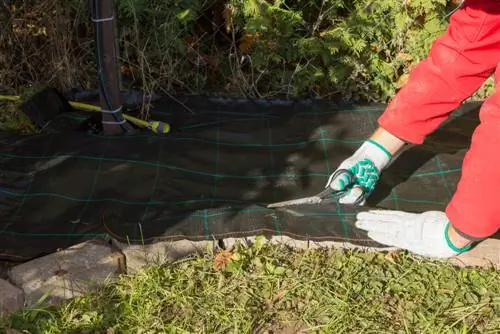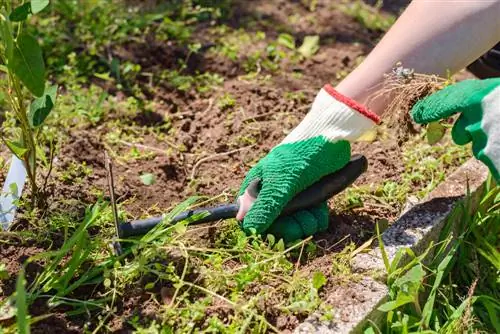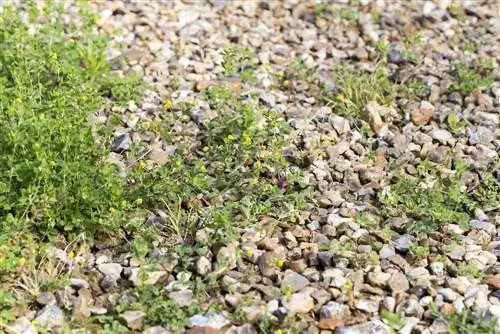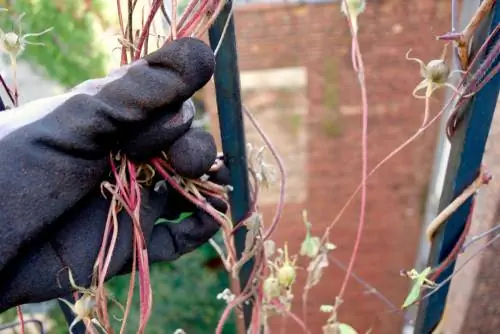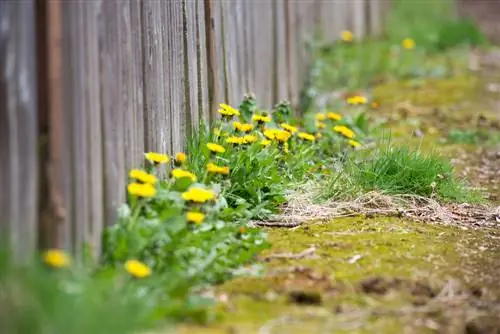- Author admin [email protected].
- Public 2023-12-16 16:46.
- Last modified 2025-01-23 11:21.
Weeds can make life difficult for the gardener. They are extremely stubborn against crops and ornamental plants and therefore have to be weeded at regular intervals. By covering the bed, for example with a layer of mulch or weed fleece, they can be effectively and permanently suppressed.

Which bed covers help against weeds?
Bed covers against weeds can be achieved using layers of mulch or weed fleece. Mulching suppresses weeds, nourishes the soil and protects against drying out, while weed control deprives light germinators of growing conditions while warming the soil and supporting irrigation.
Weed fleece against annoying weeds
By laying weed fleece you can effectively push back weeds. The fabric or film cover is only cut in the places where there are plants. Allow the individual pieces of fleece to overlap generously and secure these areas additionally with stones so that no weeds can find their way to the light.
Since most weed plants germinate in the light, these seeds will no longer grow under the weed fleece. At the same time, the fleece stores heat and water thanks to the inner coating. It therefore offers another positive effect, especially in dry times. However, it is advisable to weed thoroughly again before laying out the bed cover.
A layer of mulch not only improves the soil
Mulch is a layer of organic material that is spread on the bed. It not only protects the soil from drying out and nourishes the soil organisms, but also suppresses annoying weeds very effectively. Suitable materials include dried grass clippings, shredded twigs and leaves. Purchased bark mulch (€13.00 on Amazon) is also suitable.
What do I have to consider if I want to use a bed cover?
There are a few points to keep in mind to prevent weeds from sprouting unintentionally:
- Before mulching, weeds thoroughly.
- Chop the soil before applying a layer of mulch. If the soil beneath the material is too compacted, the precipitation will not seep away. A warm, humid climate forms under the bed cover, which offers very good growing conditions for weed seeds and pests such as snails.-
- Apply the mulch layer sufficiently thick. Four to five centimeters is optimal.
- Renew the protective blanket regularly. If it has partially decomposed, flying seeds can germinate optimally in the freshly formed humus layer.
Tip
You can easily plant useful weeds like nettles. Simply create a wild herb bed in a secluded corner of the garden. Many weeds are valuable food for insects, are edible and taste very good and even have a healing effect from which they can benefit.

